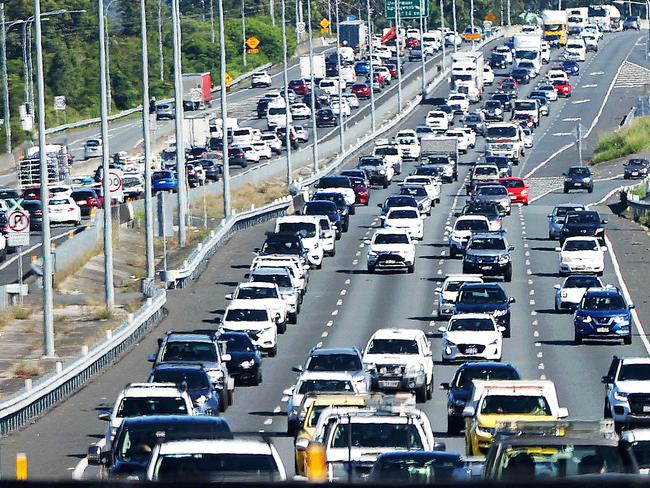Why Melbourne drivers are being slugged $447 to get around
Melbourne motorists are paying a massive proportion of their income on transport costs despite the introduction of the government’s fuel excise cut, new figures show.
News
Don't miss out on the headlines from News. Followed categories will be added to My News.
MELBOURNE households are paying an average of $447 per week just to get around, nearly $80 more than the national average, new figures show.
The quarterly Transport Affordability Index from the Australian Automobile Association (AAA) shows Melbourne motorists are paying an extra $9.93 per week at the petrol pump, and an average $55.80 per year on road tolls.
The cost of fuel has shot up to $92.07 per week, despite the temporary halving of the federal government’s fuel excise, but average car loan repayments have dropped by $20.80 per week – driven by a trend towards cheaper vehicles.
The report found Melbourne households are paying some $9 less per week on overall transport needs per week than they were in the last quarter of 2021, but these costs were 16 per cent of total income. This was a higher proportion than it was for families in any other capital except for Hobart and Brisbane.
The AAA found Melbourne families were paying an average of $23,287 annually for their total transport costs (including car insurance, registration, maintenance and fuel), or $447 per week. The national weekly average is $368.

AAA Managing Director Michael Bradley said the temporary halving of the fuel excise “doesn’t address long term motoring tax issues and means $3.3 billion of foregone revenue is no longer available to be spent on vital safety upgrades of our transport network”.
“The fact is given we live in an era of rapid electrification and fuel efficiency gains means fuel excise is an unfair and unsustainable tax,” he said.
The AAA is calling for the major parties to outline plans for motoring tax reform, arguing the fuel excise was not fit for the 21st century.
“The AAA is far from the only observer to note it is no longer fair or sustainable to have Australia’s notional ‘road user charge’ based on the consumption of petrol and diesel,” Mr Bradley said.


Analysis by the Grattan Institute showed the halving of the fuel excise – which is due to end in September – benefited high income households the most. High income households would benefit by $1.3 billion, while low-income households would only benefit by $0.75 billion, according to the Grattan analysis.
A new survey of 1005 Australians by the market insights company Savvy found fuel was the primary cost-of-living issue for nearly two in three respondents (64 per cent) – beating out concern about the cost of food, utilities, rent and mortgage payments. Just over half the survey respondents said they would drive less because of the cost of petrol, while 30 per cent said they would just absorb the increase.
Savvy CEO Bill Tsouvalas said rising fuel price rises would disproportionately disadvantage blue collar workers.
“Tradespeople and those who work outdoors are reliant on their ute or car to turn a profit or make their weekly wages,” Mr Tsouvalas said. “This will just add to the woes of the working class who are already feeling the brunt of rising grocery costs. The survey says that thirty per cent of respondents said they’ll just ‘absorb’ the increase. Tradespeople do not have that luxury.”





